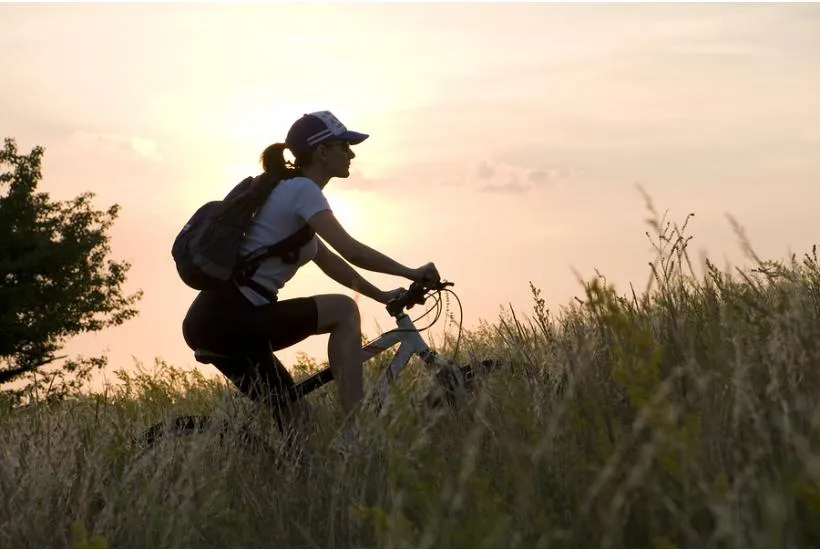Sports and Recreational Fitness

By now, you’ve probably developed the endurance, strength, and flexibility to consider adding a sport or recreational activity to your exercise program. Here’s a quick review of options to consider.
Swimming
Provided that you swim continuously at a reasonable pace, this is one of the best aerobic activities. In addition, it builds flexibility and strength, too. If you don’t know how to swim or would like to improve your technique, consider taking lessons at your nearby health club or YMCA. As with all sports activities, learning proper techniques can enhance your enjoyment of this activity.
Hiking and Cycling
This is a great way to enjoy the great outdoors while building your aerobic fitness. Stretching and strengthening activities for your legs are especially important and good equipment (shoes, boots, bikes) is essential. For a social twist, check local athletic stores or your local newspaper for clubs that offer group hiking and biking programs.
Racquet Sports
These include racquetball, squash and tennis. Handball is similar — but you use a gloved hand rather than a racquet. All of these sports require quick bursts of energy. Racquetball, squash and handball are a bit more aerobic than tennis. Many health clubs have indoor courts so you can play year round. If you prefer not to join a club, public parks often have tennis courts.
Volleyball, Baseball, Softball and Golf
These are great warm weather sports! In general, they aren’t aerobically demanding, but they offer a great opportunity to socialize while increasing daily activity levels! These sports require flexibility of your upper and lower body, so stretching is especially important. Many recreational centers and athletic programs have volleyball and basketball leagues. And, many locales offer public and private golf courses.
Basketball & Soccer
These sports provide good aerobic benefits. Jogging is a good training exercise for these sports, since running is involved. Ball handling skills are important for both sports. The difference is that with basketball you use your hands to handle the ball and with soccer, you use your feet.
Cross Country Skiing
Since you use both legs and arms in rhythmic, continuous motion, cross-country skiing is one of the best sports for developing and improving your aerobic fitness level. And, if you can’t ski on real snow, there are cross country skiing simulators.
Yoga & Tai Chi
Both of these activities are quiet exercise alternatives that help you to increase your flexibility. And, both incorporate meditation activities providing further stress reduction benefits. Health and wellness centers often offer these types of programs.
Try This Activity
Choose one of the sports or recreational activities above and investigate where and when you could participate in the activity. If equipment is needed, see if you can rent it or visit a reputable athletic store to get advice on the equipment best suited for you and your needs.
If you decide to pursue one of these activities, consider attending a class on proper training and techniques for the sport or activity you’ve chosen. Health clubs, recreational centers, YMCA’s, and local colleges and universities usually offer instructional exercise programs. If you choose to add one of these sports or recreational activities to your exercise program, you can substitute it for your usual walking session.
Continue with your walking program at least 4 times per week, 40 minutes each session. Carry light hand weights during all or a portion of your walk. As always, monitor your heart rate and adjust your level of exercise as needed.
Consult your physician before beginning any exercise program.